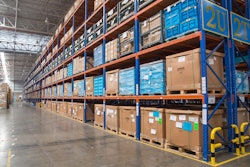
Today, shopping is so easy, that it’s almost hard. From scrolling online to strolling through the aisles of a store, consumers are given endless options – and it's causing them to suffer from 'shopping fatigue.’ Unfortunately, empty or abandoned carts spell disaster for retailers, who must turn around and cut prices to cull inventory and make way for the next shipment of goods. While it may seem counterintuitive, retailers are now discovering that the best way to get people to buy more is to offer less.
The Power of Choice in Retail
Shopping fatigue doesn’t just impact everyday consumers; it creates ripple effects throughout the retail industry. When the options are limitless, consumers often opt to buy nothing at all. As a result, retailers must cut prices to (hopefully) sell more in time to make space for the next shipment of goods. This not only leads to potential mass overconsumption but also a negative environmental impact due to the growing volume of cheap goods. Additionally, for retailers, this translates into lower conversion rates and higher unsold inventory levels, which can quickly become a financial burden. Offering fewer unique products—and cutting those that don’t sell quickly—is a way to trim costs and fatten margins.
For example, during the pandemic, HanesBrands reduced its variety of options as it struggled to maintain adequate stock amidst supply chain disruptions and delays. They have since continued to limit their offerings — the number of unique products as of the first quarter of 2024 is down about 50% from 2019. That has only benefited their profits — gross margins were 40% this quarter, up from 32.4% a year ago.
This power of choice, where offering more can result in selling less, has prompted a shift in retail strategy. Increasingly, retailers are finding that less is more. By curating their product offerings, retailers can help consumers make quicker, more confident purchasing decisions, driving sales and enhancing the customer experience.
Curated Shopping: A Win-Win for Consumers and Retailers
Curated choices (items that have been carefully handpicked and displayed) allow retailers to differentiate themselves in today’s crowded marketplace. By offering a thoughtful and concise array of products, retailers can establish a strong brand identity and build deeper connections with their customers. This not only encourages repeat business but also fosters brand loyalty, as consumers come to trust that the retailer understands their needs and will consistently deliver products that meet their expectations. Instead of bombarding consumers with endless options, retailers are focusing on strategically chosen products that cater to specific customer needs and preferences.
A recent Accenture study found that 72% of consumers feel overwhelmed by too many choices when making a purchase decision. From this, many retailers are concluding that consumers prefer shopping at stores with a more streamlined and focused product selection, as it makes it easier to find what they need without feeling overwhelmed. Increasingly, retailers like Dollar General and Kohl’s are cutting back on the variety of items they stock.
Consumers won’t mind the lack of choice. They may even be relieved and welcome a nudge in the right direction through thoughtful displays and easily navigable websites. A cluttered store that sells several versions of the same t-shirt will only create confusion. With fewer options, consumers can walk away knowing they made the best choice.
The Role of Supply Chain Management During the Holiday Season
To mirror the reduction of offerings, some stores are shrinking their physical footprints as well. Macy’s and Bloomingdale’s, for example, are closing their large stores and opening smaller locations ranging from 30,000 to 50,000 square feet, down from as much as 200,000 square feet. This shift aligns with the trend of offering fewer choices, as smaller stores are easier to manage for both consumers and retailers. So, what does this mean for retailers, especially ahead of the holiday season?
As retailers approach this time of year, they must be more agile and responsive than ever, adapting to market trends and fluctuations in consumer demand. This demands a robust supply chain strategy that prioritizes flexibility, efficiency, and sustainability.
The holiday season underscores the importance of maintaining a delicate balance between adequate stock levels and avoiding overproduction. Retailers must closely monitor consumer trends and forecast demand with greater precision to ensure they are prepared. Additionally, unforeseen supply chain disruptions—whether due to global challenges or local events—can significantly impact a retailer's ability to deliver on its offerings. Investing in technology and processes that provide real-time visibility into supply chains is crucial, allowing retailers to respond quickly and minimize any negative effects on the customer experience.
In this era of streamlined choices, the power of "less" is becoming increasingly clear. By reducing complexity and focusing on what truly matters, retailers can enhance both operational efficiency and customer satisfaction, making the most of the holiday season and beyond.


![Pros To Know 2026 [color]](https://img.sdcexec.com/mindful/acbm/workspaces/default/uploads/2025/08/prostoknow-2026-color.mduFvhpgMk.png?auto=format%2Ccompress&bg=fff&fill-color=fff&fit=fill&h=100&q=70&w=100)







![Pros To Know 2026 [color]](https://img.sdcexec.com/mindful/acbm/workspaces/default/uploads/2025/08/prostoknow-2026-color.mduFvhpgMk.png?ar=16%3A9&auto=format%2Ccompress&bg=fff&fill-color=fff&fit=fill&h=135&q=70&w=240)







